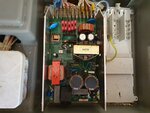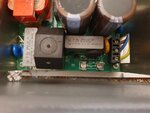- Jul 22, 2021
- 4
- 0
- 10
Can anyone tell me what this 5A fuse is for? It's the missing one at the bottom, shown in the close up pic.
Just checking the electrics on our 2006 burstner c530tk, which we bought during lockdown and have been doing up, and have found a problem. This 5a fuse was out, when we put it back the circuit breaker on the right hand side trips. According to the handwritten label that circuit breaker is for the water heater, fridge and charger. The water heater and fridge are working fine, and disconnecting the charger doesn't stop the switch from tripping. But if I knew what the fuse was for I'm sure that would help! Or even better, if somebody out there has a wiring diagram - the manual is not much help here.
Just checking the electrics on our 2006 burstner c530tk, which we bought during lockdown and have been doing up, and have found a problem. This 5a fuse was out, when we put it back the circuit breaker on the right hand side trips. According to the handwritten label that circuit breaker is for the water heater, fridge and charger. The water heater and fridge are working fine, and disconnecting the charger doesn't stop the switch from tripping. But if I knew what the fuse was for I'm sure that would help! Or even better, if somebody out there has a wiring diagram - the manual is not much help here.




